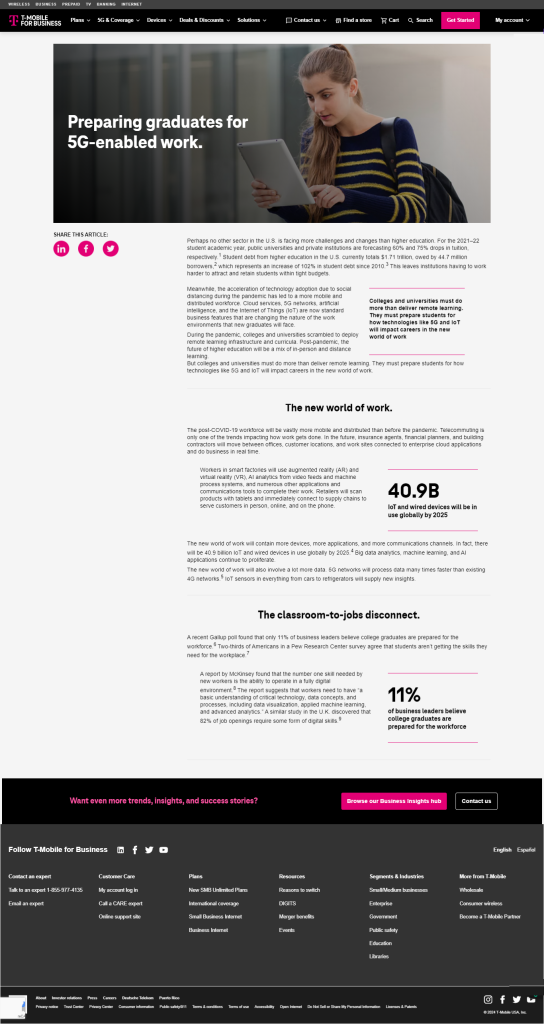
Prepping Grads for the 5G Mobile Workforce

Perhaps no other sector in the U.S. is facing more challenges and changes than higher education. For the 2021–22 student academic year, public universities and private institutions are forecasting 60% and 75% drops in tuition, respectively. Student debt from higher education in the U.S. currently totals $1.71 trillion, owed by 44.7 million borrowers, which represents an increase of 102% in student debt since 2010. This leaves institutions having to work harder to attract and retain students within tight budgets.
Meanwhile, the acceleration of technology adoption due to social distancing during the pandemic has led to a more mobile and distributed workforce. Cloud services, 5G networks, artificial intelligence, and the Internet of Things (IoT) are now standard business features that are changing the nature of the work environments that new graduates will face.
During the pandemic, colleges and universities scrambled to deploy remote learning infrastructure and curricula. Post-pandemic, the future of higher education will be a mix of in-person and distance learning.
But colleges and universities must do more than deliver remote learning. They must prepare students for how technologies like 5G and IoT will impact careers in the new world of work.
All information that you supply is protected by our Privacy Policy
In order to provide you with this free service, we may share your business information with companies whose content you choose to view on this website.
By submitting your information you agree to our Terms of Use.
Third party cookies may be placed, to serve more relevant ads when you browse the web. You can learn more about those ads here.